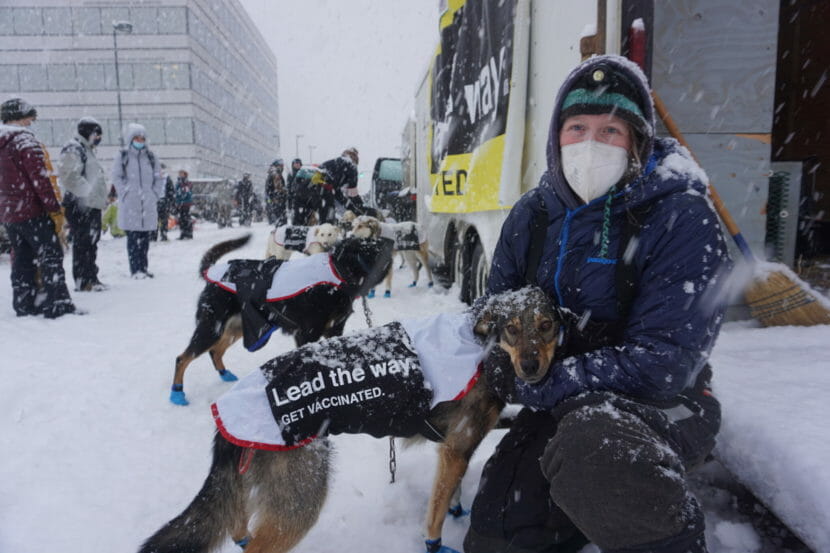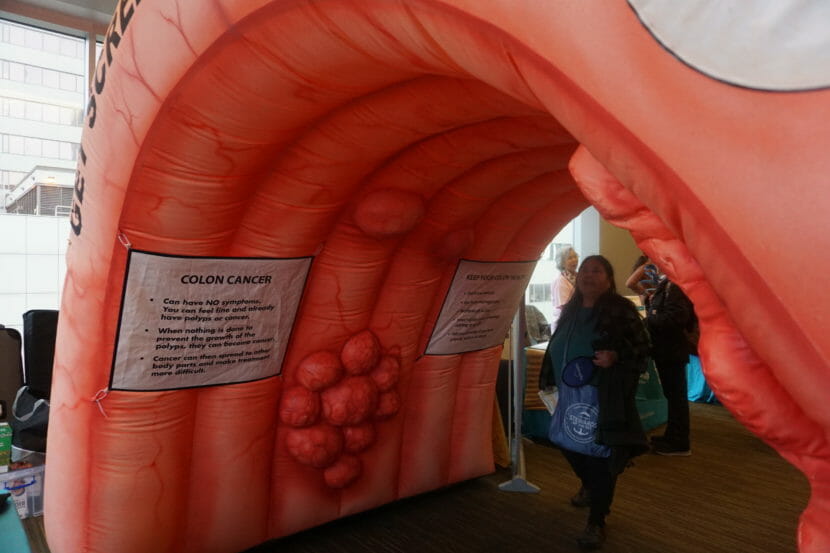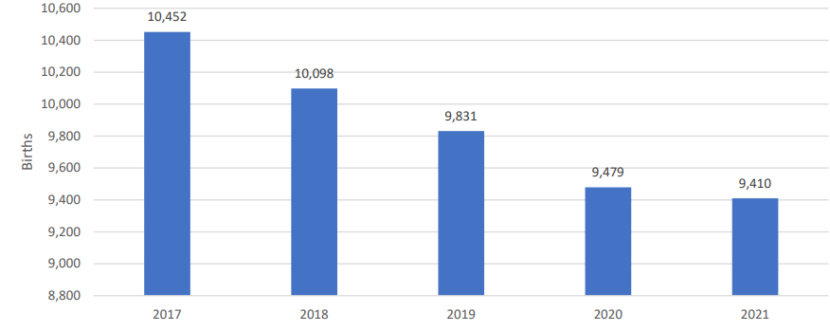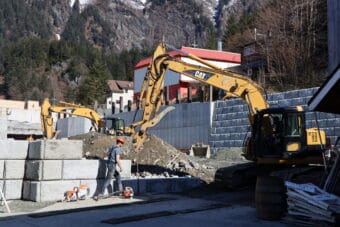
Alaskans’ life expectancy dropped and death rate rose in 2021, with COVID-19 ranking as the third-highest cause of death during the year, according to the Vital Statistics Annual Report released last week by the Alaska Division of Public Health.
The difference between 2021 and 2020 was driven mostly by COVID-19. In 2021, there were 6,216 total deaths in the state, compared to 5,183 in 2020.
In 2021, 762 Alaskans died of COVID-19, and another 79 Alaskans died with COVID-19 as a contributing factor, the report said. That compares to 2020, the first year of the pandemic, when 182 Alaskans died from the disease and another 15 died with COVID-19 as a contributing factor.
The age-adjusted death rate in 2021 was 908.3 per 100,000 people, and Alaskans’ life expectancy was calculated at 77.5 years. That compares to an age-adjusted death rate of 785.3 per 100,000 people and a calculated life expectancy of 80 years in 2020.

It was similar to a national decline in life expectancy, as reported by the Centers for Disease Control and Prevention. U.S. life expectancy fell to 76.1 years from 77 years in 2020, with the decline driven by COVID-19, according to the CDC. It was the second consecutive year of declining life expectancy, from 79 years in 2019, according to the CDC.
In Alaska, aside from COVID-19, the death and disease statistics in 2021 were mostly similar to those of the previous year.
Alaska’s top two leading causes of death in 2021 were cancer and heart disease, the same as in 2020. Suicide continues to rank in the top 10 of causes of death, in seventh place in 2021, as it was in 2020.
One difference between the years, in addition to the pandemic-caused deaths, were noticeable increases in alcohol-related and drug-related fatalities in 2021, according to the report.

Aside from becoming the third-leading cause of death in Alaska, COVID-19 imposed far greater treatment costs in 2021 than in the prior year, according to a separate report released by the division.
It ranked third as a cause for hospitalization, after childbirth and septicemia, according to the Alaska Health Facilities Data Reporting annual report. There were 4,184 inpatient hospitalizations for COVID-19 in 2021, compared to 1,629 in 2020, and the intensive care unit total of 2,167 was more than twice the total for 2020. Costs for treating COVID-19 in Alaska hospitals totaled about $595 million in 2021, up from $195 million in 2020, with an average per-patient charge of $142,095 compared to $119,579 in 2020. The average COVID-19 hospital stay was 9.2 days in 2021, compared to the 2020 average of 8.2 days.
Despite the increased number of deaths, they were well outnumbered by births in 2021, the same as in previous years, with 9,410 babies born in the year. That compares to the 9,479 born in 2020.
Total births have decreased each year since 2017, when there were 10,452 babies born in Alaska, the report said.

Fertility rates slipped in 2021 to 64.3 births per 1,000 women of child-bearing age, defined as 15 to 44. That was down from 65 in 2020 and continuing a years-long slide. In 2017, according to the division, Alaska had 71.3 births per 1,000 women.
Both the vital statistics and health facility annual reports provide detailed breakdowns about varying demographic groups, geographic regions and medical conditions.
The vital statistics report even noted the most popular names for Alaska babies born in 2021: Amelia for girls and a tie between Noah and Oliver for boys.
This story originally appeared in the Alaska Beacon and is republished here with permission.



